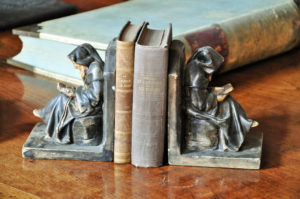There is a perception that creative writing cannot be taught. This poses a problem for aspiring writers and those who teach creative writing. Writing instruction tends to be geared to the craftsman learning trade, with workshopping being the primary mode of learning, as the word craft implies.
This contrasts with the importance of teaching, what Dorothea Brande who wrote On Becoming a Writer calls, “how to be a writer,” that includes working with both sides of the writer, the internal critic and the artist. Teaching how to ‘be’ a writer includes understanding there is a psychology to the creative process that involves stages resembling a journey involving both the conscious and unconscious mind. This is especially the case for novel writing which can feel like and be an arduous slough. Graeme Harper likens writing a novel to a journey and to space travel. That’s because many writers are what is called “pantsers”—they “fly by the seat of their pants,” as opposed to being “plotters,” having a plan. Graeme says, writers must “see the novel as a journey to be undertaken so that each point in the novel becomes a place on a map and the journey can be traced, literally or metaphorically, from start to finish.” (36).

A teaching model that addresses both the creative and the critical sides of the novel writer’s psyche, and treats novel writing as a journey, can help the student learn how to withstand the trials they encounter along the way to complete the creative act without giving up. Brande says, “most of the methods of training the conscious side of the writer—the craftsman and the critic in him—are hostile to the good of the unconscious, the artist’s side…it is possible to train both sides of the character to work in harmony” (44).
Conversely, Curtis says, “the unconscious must be harnessed, trained, disciplined like an uncooperative child” (3). I have designed a teaching model that addresses both sides involve understanding the writer’s inner journey. With this in mind, the Hero’s Journey, popularized by Joseph Campbell a model for understanding the structure of myths and stories, can be of enormous help when used as an allegory for teaching students about the inner journey that includes both sides of the writer on which they embark as part of the creative process.
Not only do the readers or audience of a story go on the Hero’s Journey vicariously by connecting emotionally with the protagonist, but writers also go on a parallel journey psychologically as they create their protagonist’s tale. Teaching creative writing in this way is designed to follow the Hero’s Journey, guiding the writer through each stage with exercises that address both the critic and the artist.
emotionally with the protagonist, but writers also go on a parallel journey psychologically as they create their protagonist’s tale. Teaching creative writing in this way is designed to follow the Hero’s Journey, guiding the writer through each stage with exercises that address both the critic and the artist.
Stay tuned for more on this and a workshop that I will give for writers.
Works Cited:
Brande, Dorothea. Becoming a Writer (New York, NY: Harcourt, Brace & Company: 1934.
Abi, Curtis. “Rethinking the Unconscious in Creative Writing Pedagogy.” New Writing, vol. 6, no. 2, 2009, pp. 105–116. doi:10.1080/14790720903215216.
Harper, Graeme. Teaching Creative Writing. Continuum, 2006.

 The Transformative Power of Story
The Transformative Power of Story